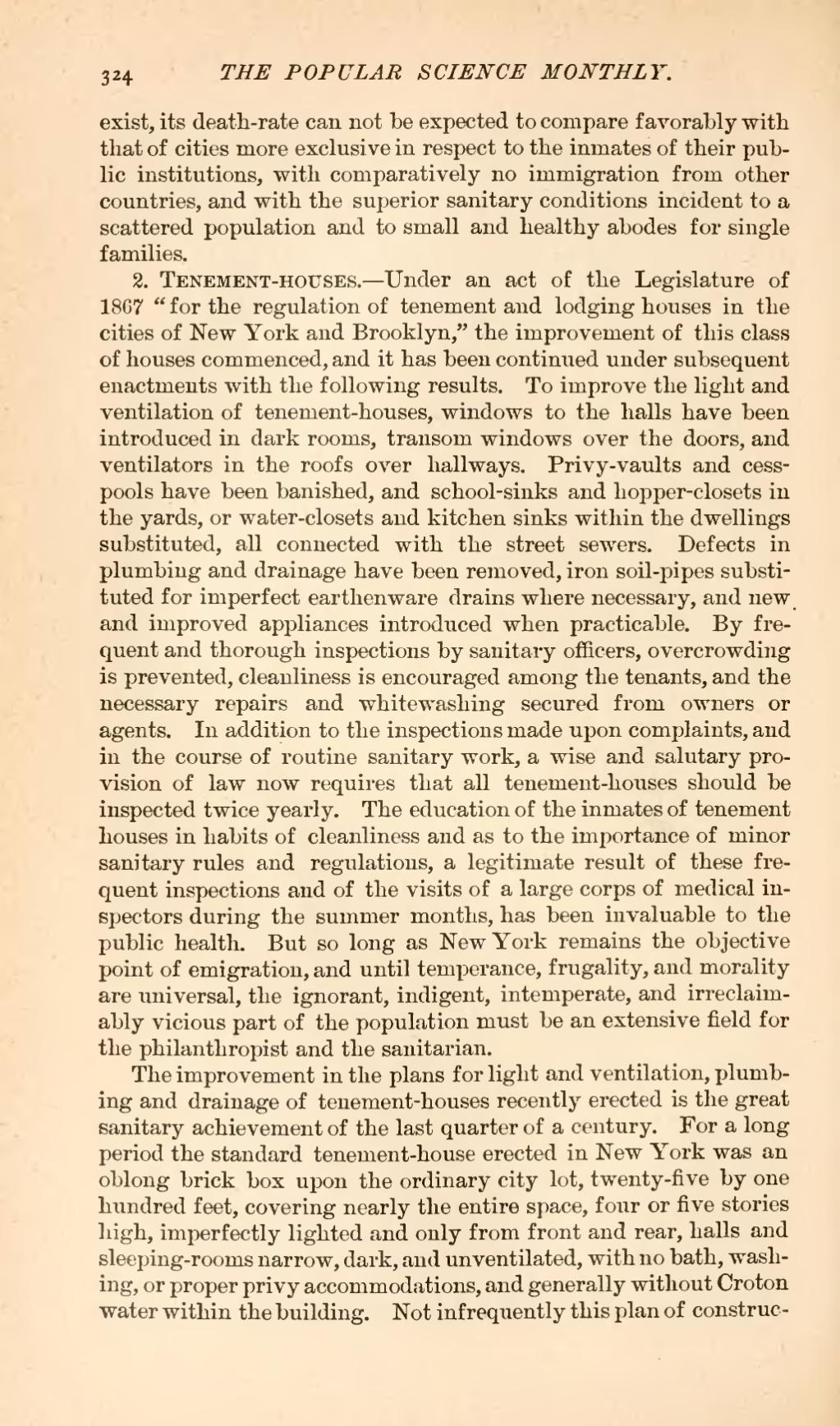exist, its death-rate can not be expected to compare favorably with that of cities more exclusive in respect to the inmates of their public institutions, with comparatively no immigration from other countries, and with the superior sanitary conditions incident to a scattered population and to small and healthy abodes for single families.
2. Tenement-houses.—Under an act of the Legislature of 1867 "for the regulation of tenement and lodging houses in the cities of New York and Brooklyn," the improvement of this class of houses commenced, and it has been continued under subsequent enactments with the following results. To improve the light and ventilation of tenement-houses, windows to the halls have been introduced in dark rooms, transom windows over the doors, and ventilators in the roofs over hallways. Privy-vaults and cesspools have been banished, and school-sinks and hopper-closets in the yards, or water-closets and kitchen sinks within the dwellings substituted, all connected with the street sewers. Defects in plumbing and drainage have been removed, iron soil-pipes substituted for imperfect earthenware drains where necessary, and new and improved appliances introduced when practicable. By frequent and thorough inspections by sanitary officers, overcrowding is prevented, cleanliness is encouraged among the tenants, and the necessary repairs and whitewashing secured from owners or agents. In addition to the inspections made upon complaints, and in the course of routine sanitary work, a wise and salutary provision of law now requires that all tenement-houses should be inspected twice yearly. The education of the inmates of tenement houses in habits of cleanliness and as to the importance of minor sanitary rules and regulations, a legitimate result of these frequent inspections and of the visits of a large corps of medical inspectors during the summer months, has been invaluable to the public health. But so long as New York remains the objective point of emigration, and until temperance, frugality, and morality are universal, the ignorant, indigent, intemperate, and irreclaimably vicious part of the population must be an extensive field for the philanthropist and the sanitarian.
The improvement in the plans for light and ventilation, plumbing and drainage of tenement-houses recently erected is the great sanitary achievement of the last quarter of a century. For a long period the standard tenement-house erected in New York was an oblong brick box upon the ordinary city lot, twenty-five by one hundred feet, covering nearly the entire space, four or five stories high, imperfectly lighted and only from front and rear, halls and sleeping-rooms narrow, dark, and unventilated, with no bath, washing, or proper privy accommodations, and generally without Croton water within the building. Not infrequently this plan of construc-
